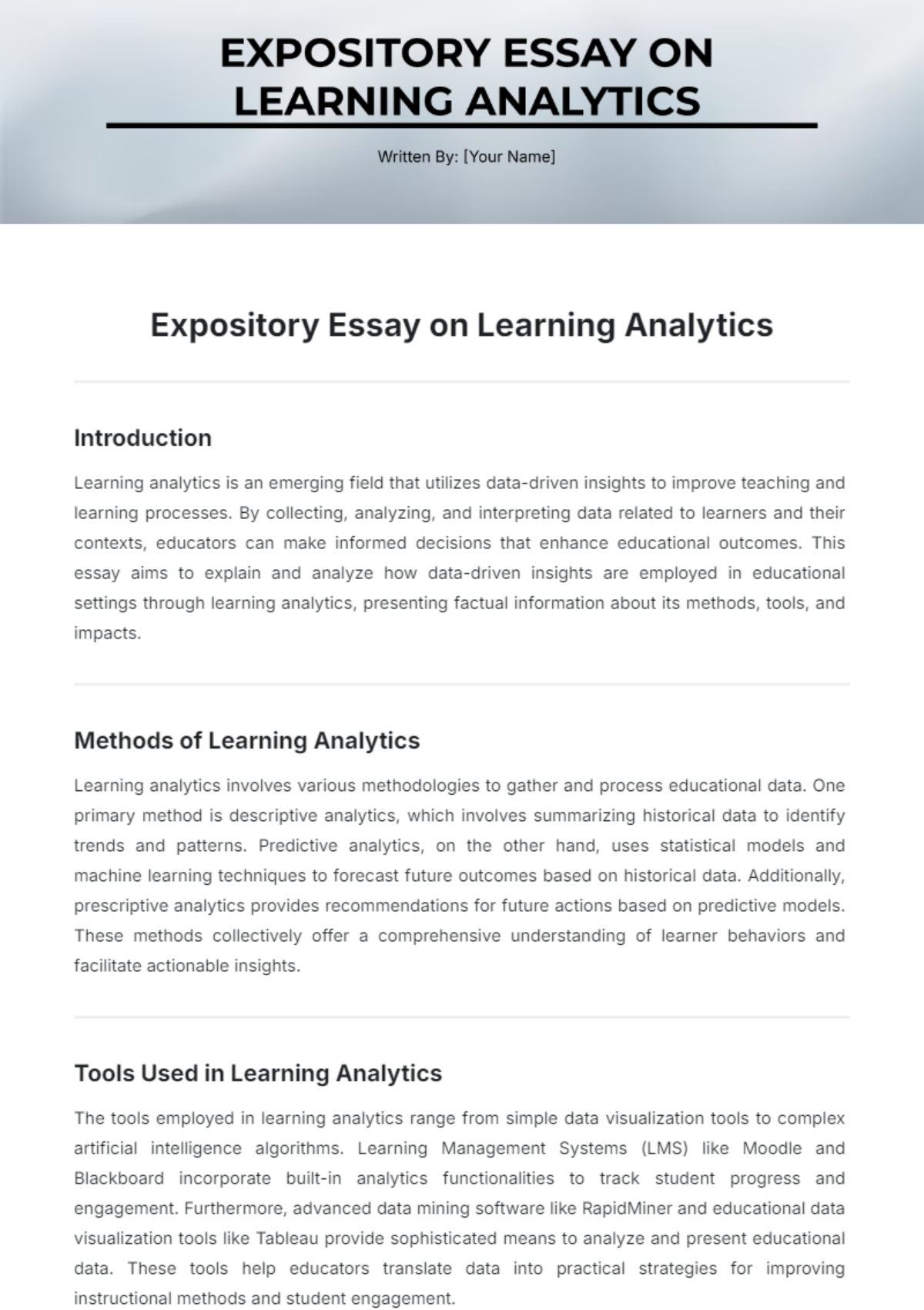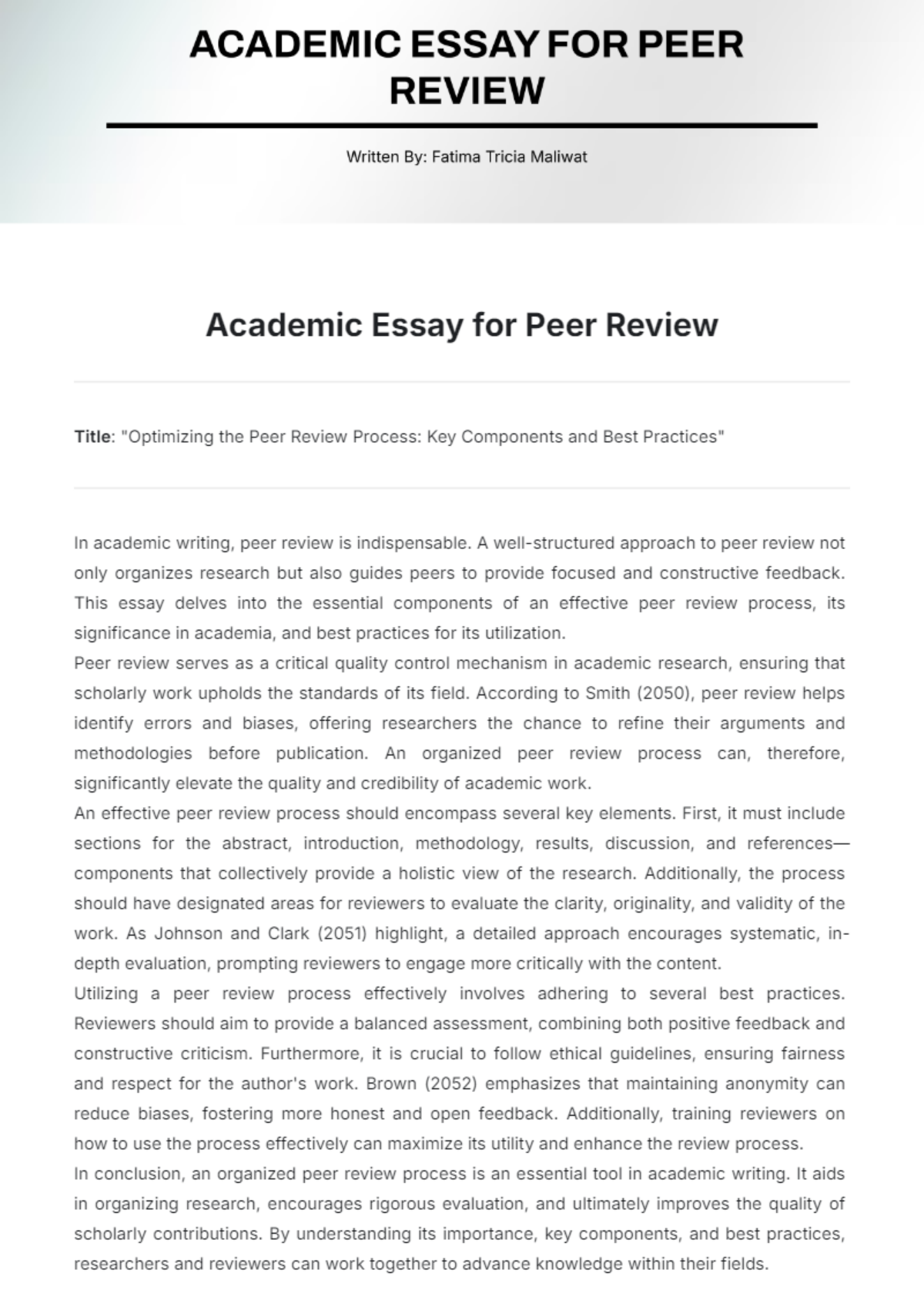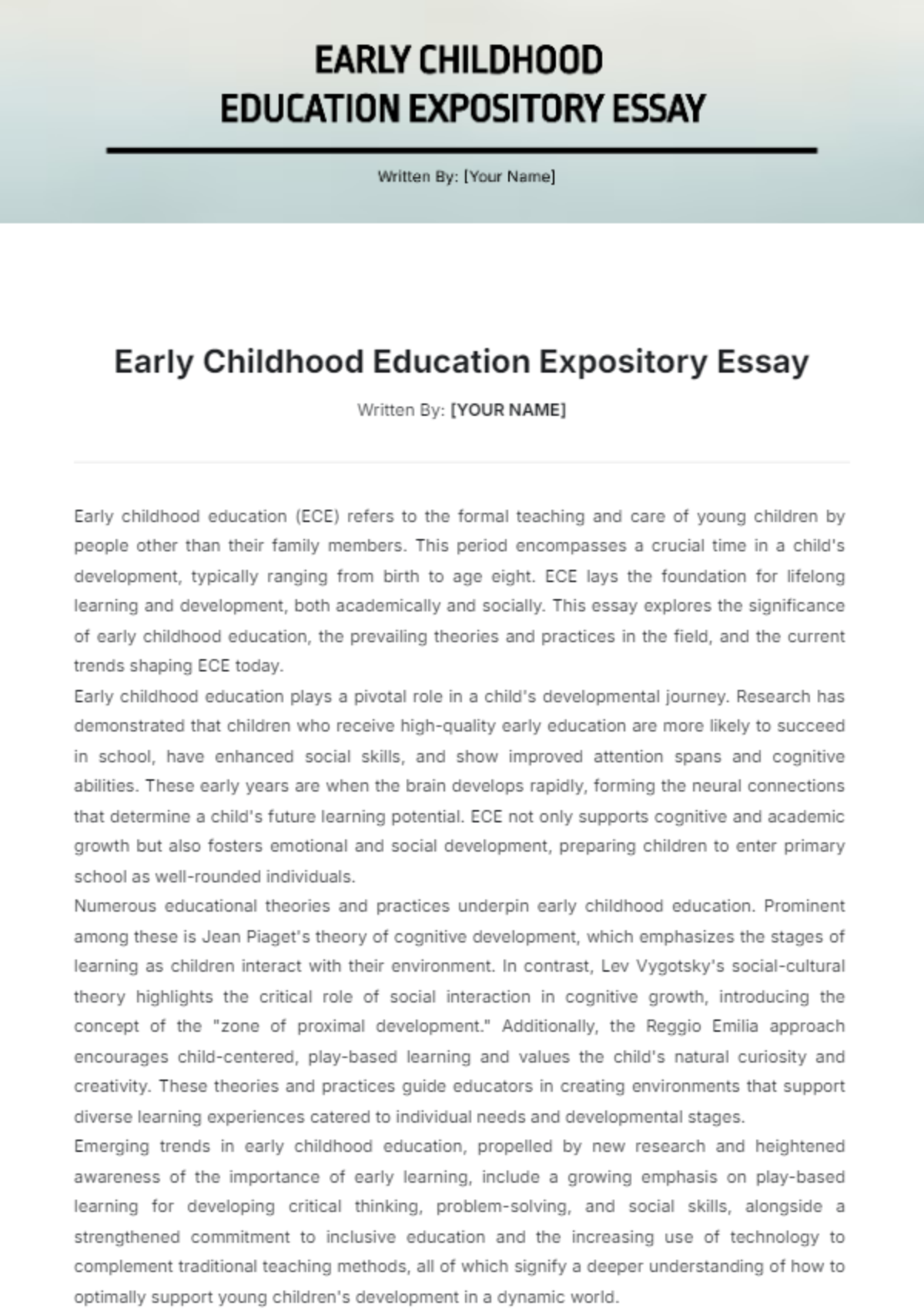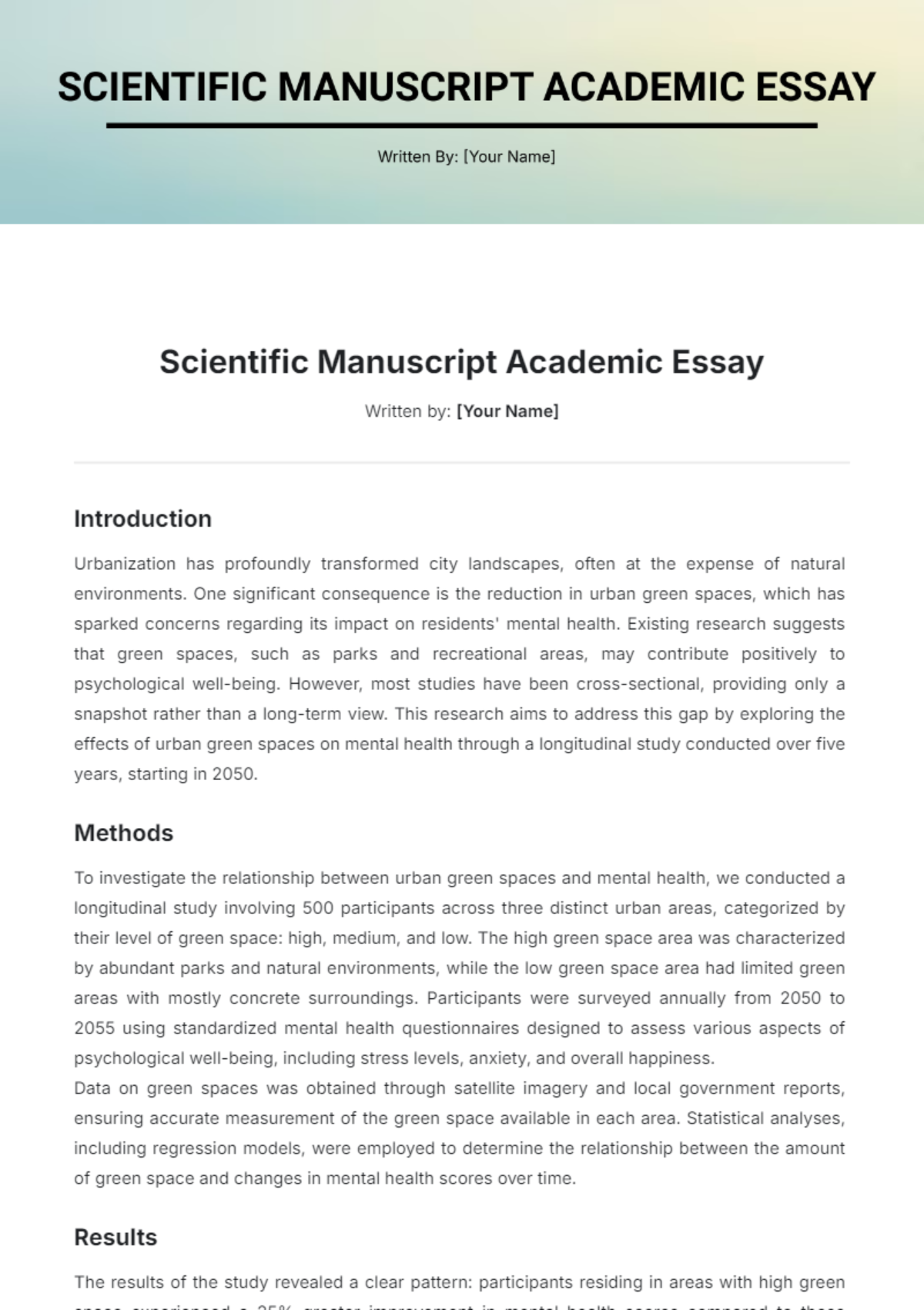Free Expository Essay on Learning Analytics
The Expository Essay on Learning Analytics Template from Template.net is fully customizable and editable, making it easy to tailor to your needs. Editable in our AI Editor tool, this template streamlines essay writing, providing a structured format for discussing learning analytics effectively. Perfect for students and professionals looking for a high-quality, editable template.



















